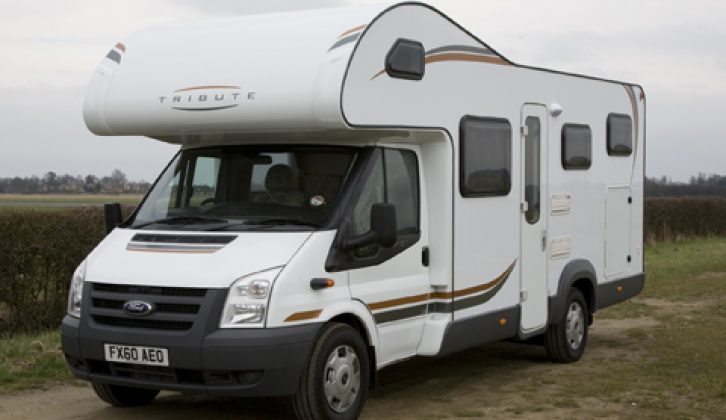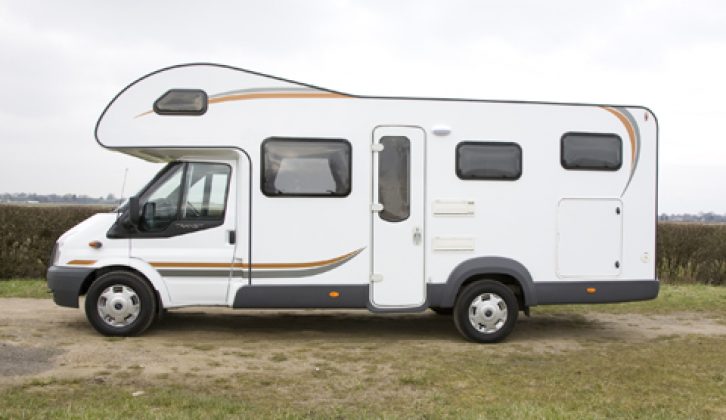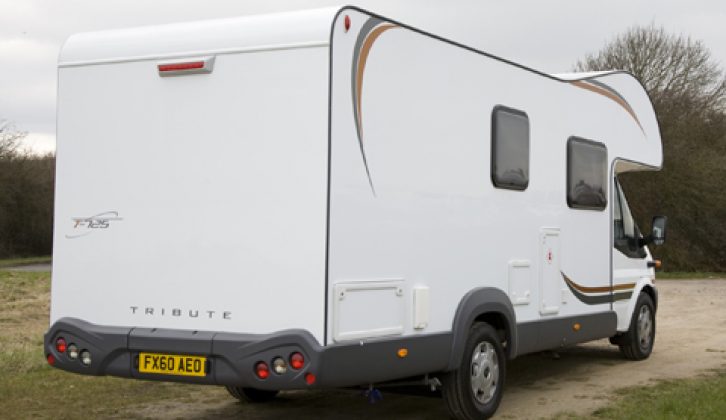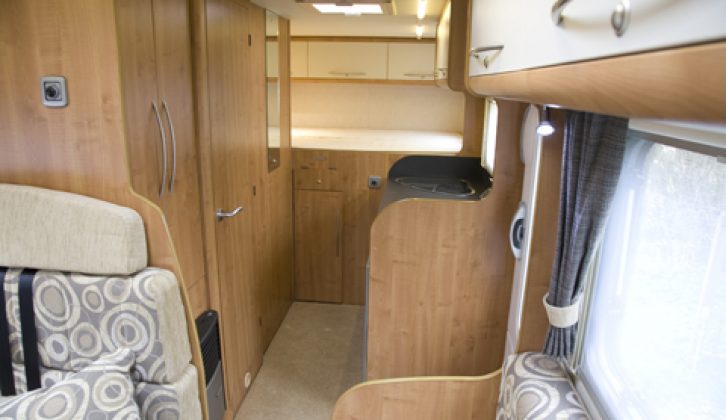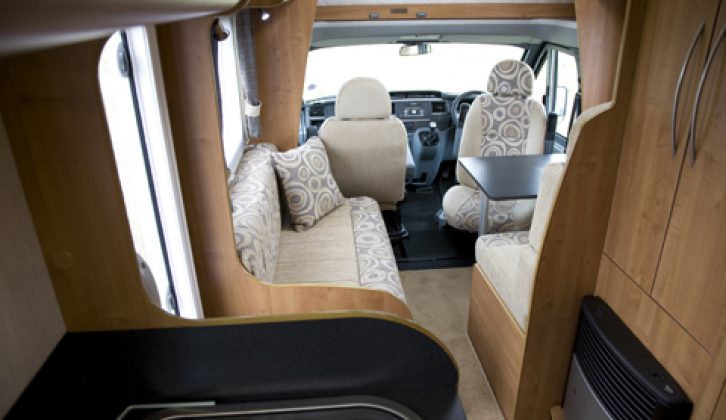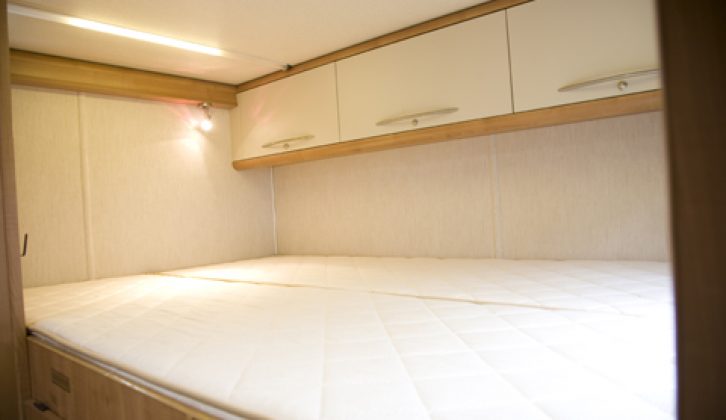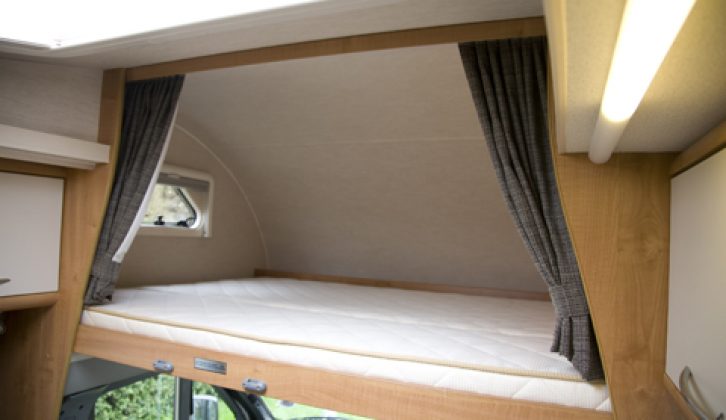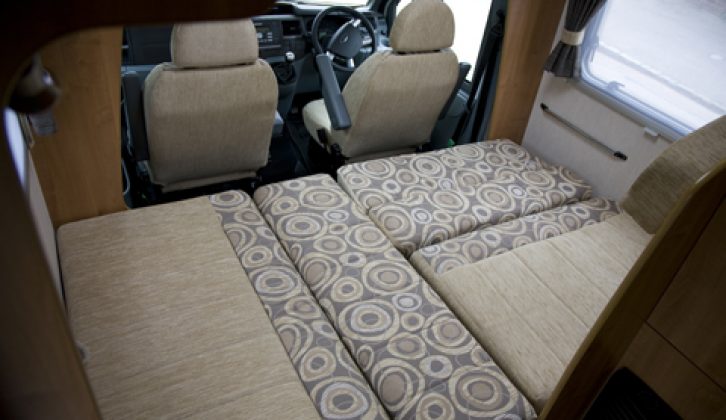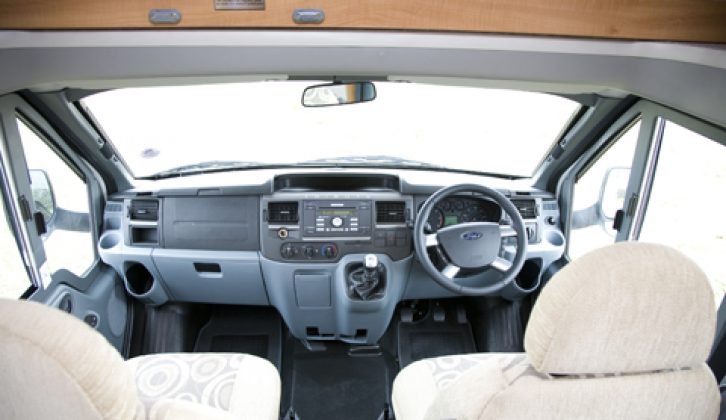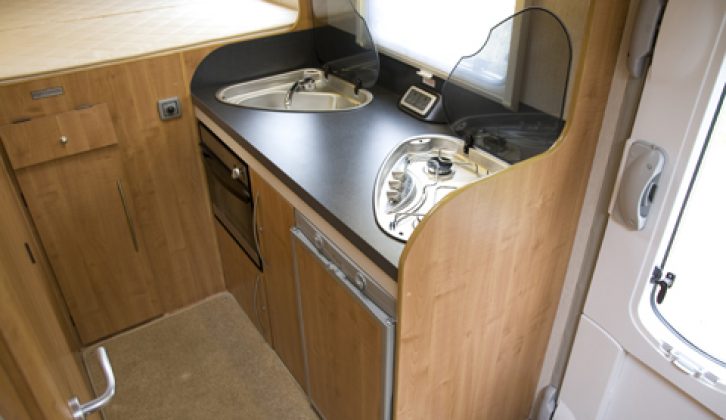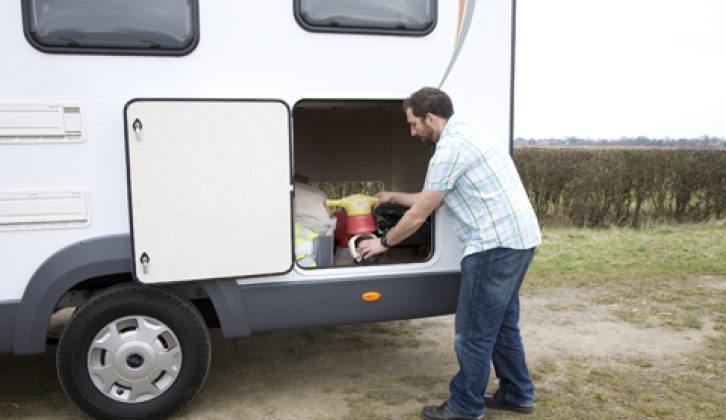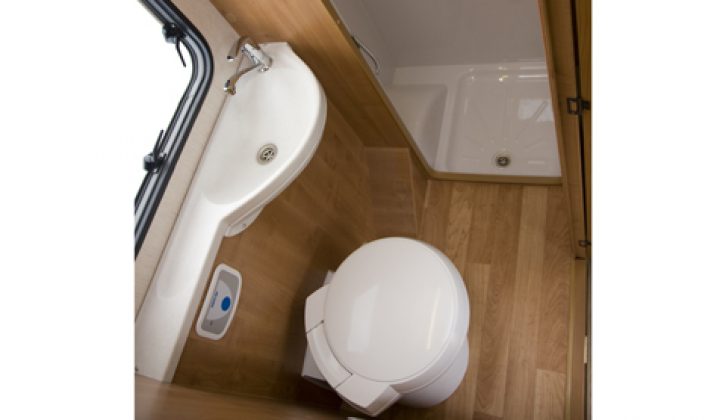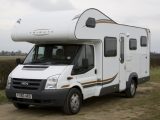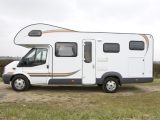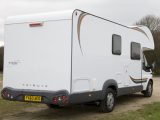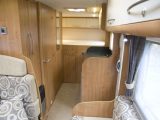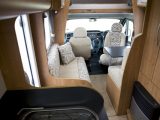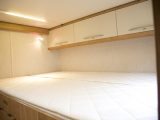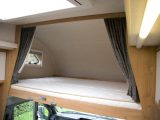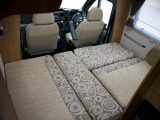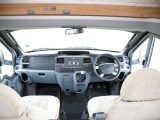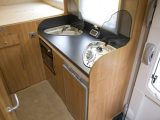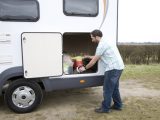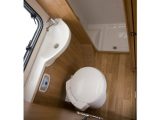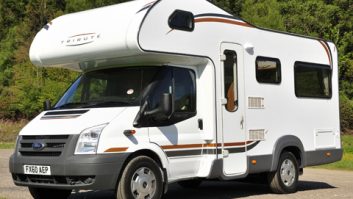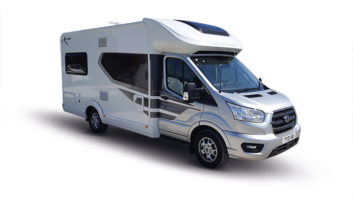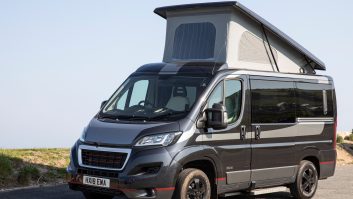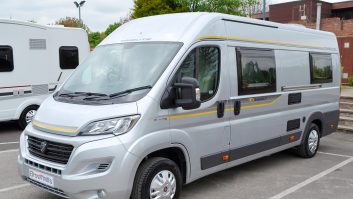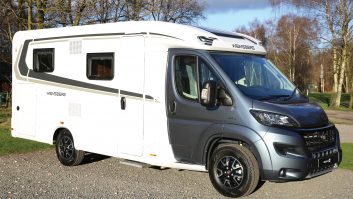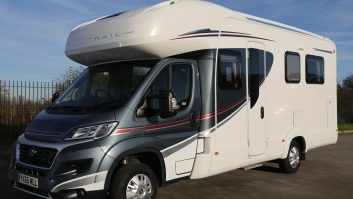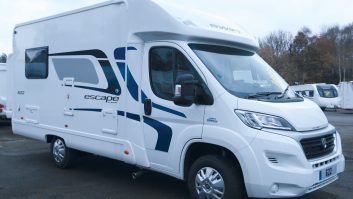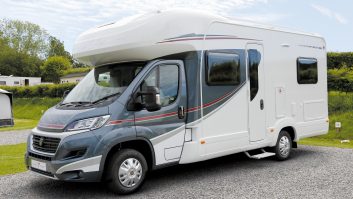Verdict
A lot of ’van with plenty of payload at an attractive price, and built on an excellent base vehicle. And it’s all backed by Auto-Trail’s reputation for build quality.
Pros
Excellent base vehicle; construction; comfy front lounge
Cons
Only four belted seats; small washroom
Tribute coachbuilts are built on the low-frame, wide-track Ford Transit chassis cab at Auto-Trail’s Grimsby-based factory. They also share the same polydet GRP sidewalls, furniture (manufactured on site) and build processes (in which the sidewalls are bolted into floor-mounted, strong aluminium extrusions), as Auto-Trail’s branded ranges.
The 725-G, based on the long-wheelbase Transit, measures 6.95m (22’9”) in length and is powered by the 2.4-litre 140bhp engine unit as standard – which is a considerable increase in power on the standard 100bhp offerings found in the largest models of rival budget ranges from Elddis (the Autoquest) and Swift Group (the Escape). The gross vehicle weight is 3500kg, too, which is good news for those drivers who passed their driving test after January 1997, and who therefore don’t automatically have the C1 licence entitlement they would need to drive heavier vehicles.
The handling and road holding of the Transit is, in our opinion, the best in the motorhome market. With radio buttons mounted on the steering column, cruise control as standard, drinks and bottle holders everywhere, and a good, standard stereo unit, the Transit makes a refreshing change from the Fiat Ducato, too, even if it is rather stark.
Family ‘van The 725-G sleeps six, but only comes with four belted seats. Rear passengers we carried found the seats a bit upright, but comfortable enough on the road.
Externally, the Tributes are plain but not unattractive. There are no fancy colour-coded, matching cab paintwork and bumper sets on offer: the Transit’s normal black bumper and grille surround is a design motif carried through to the acrylic-capped ABS skirts and rear bumper. The overcab gets a single window, and the rear panel is flat and unfussy.
Interior There’s no entry step to the habitation area: the door well is recessed into the skirting instead. Inside, drop-in carpets overlay the vinyl floor. A midi-Heki rooflight illuminates the front lounge area during the day. At night there are LED strip lights that run the length of the motorhome, and above the overhead lockers in the lounge. Additional lighting is provided by directional reading lights under the lockers.
The comfortable front lounge incorporates the swivelling cab seats, a forward-facing two-seater bench and a side sofa. It seats six adequately. However, due to the lack of an extension the 95 x 58cm (3’2 x 1’11”) table doesn’t quite manage to serve either the cab passenger seat or the side sofa.
The kitchen and washroom are both sited amidships, one on either side of the motorhome, and a fixed transverse double bed sits atop a large garage space at the rear.
Night-time At night, the generous overcab bed has a huge 72cm (2’4”) of headroom, with decent amount of space right to the front of the Luton section. The bi-fold mattress and slatted base, which slides beneath the mattress when not in use, means that access from the cab area to the living quarters is unimpeded.
The lounge table forms the bed base to make up a transverse double bed. To the rear, access to the fixed double bed is provided by an aluminium ladder that emerges from beneath a locker flap. The garage can also be accessed from inside the motorhome.
Kitchen and washroom The kitchen is compact, with a 77-litre fridge/freezer, three-burner hob and combined grill and oven, but it’s adequate and there is enough worktop and storage space.
Rather more squeezed is the washroom: standing room in the cubicle is limited, because the wheel arch eats into the shower-tray space and isn’t strong enough to stand on. The cubicle itself measures 78 x 55cm (2’7” x 1’9”). Leg room around the swivel-head toilet is also in short measure, but the chrome-look fixtures and fittings are a nice touch.
Onboard services are basic but adequate (such as gas-only space heating). They can also be upgraded if you buy the Lux pack. (The Lux pack includes mains electric blown-air heating, cab blinds, TV aerial, and scatter cushions.)
Technical Specifications
| Payload | 640 kg |
| MTPLM | 3500 kg |
| Shipping Length | 6.95 m |
| Width | 2.25 m |
